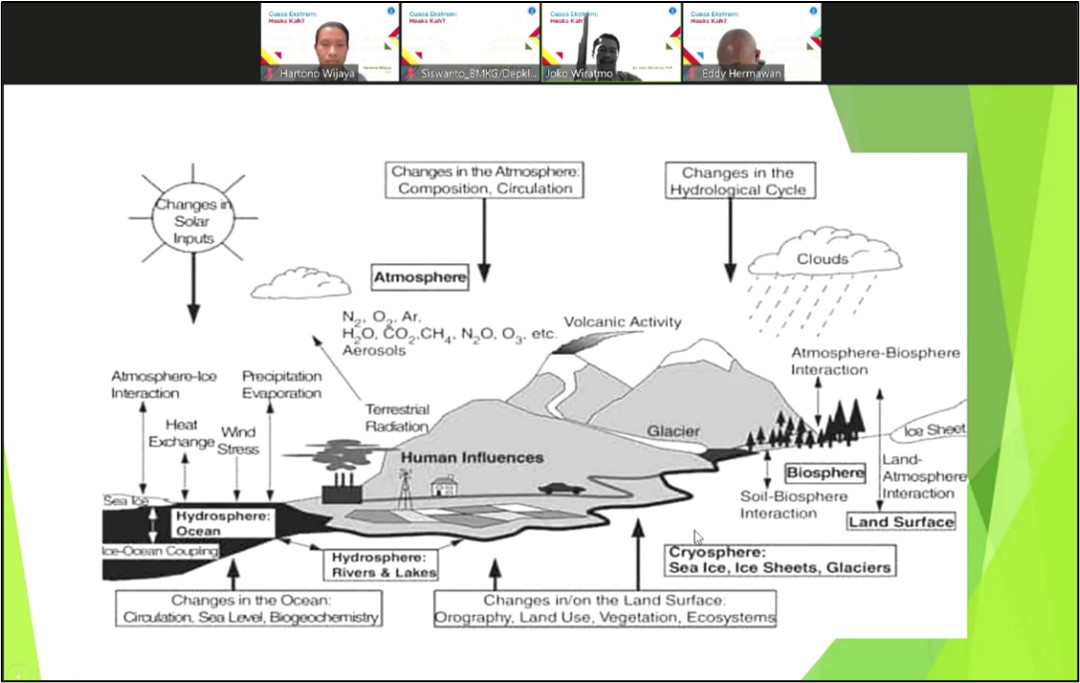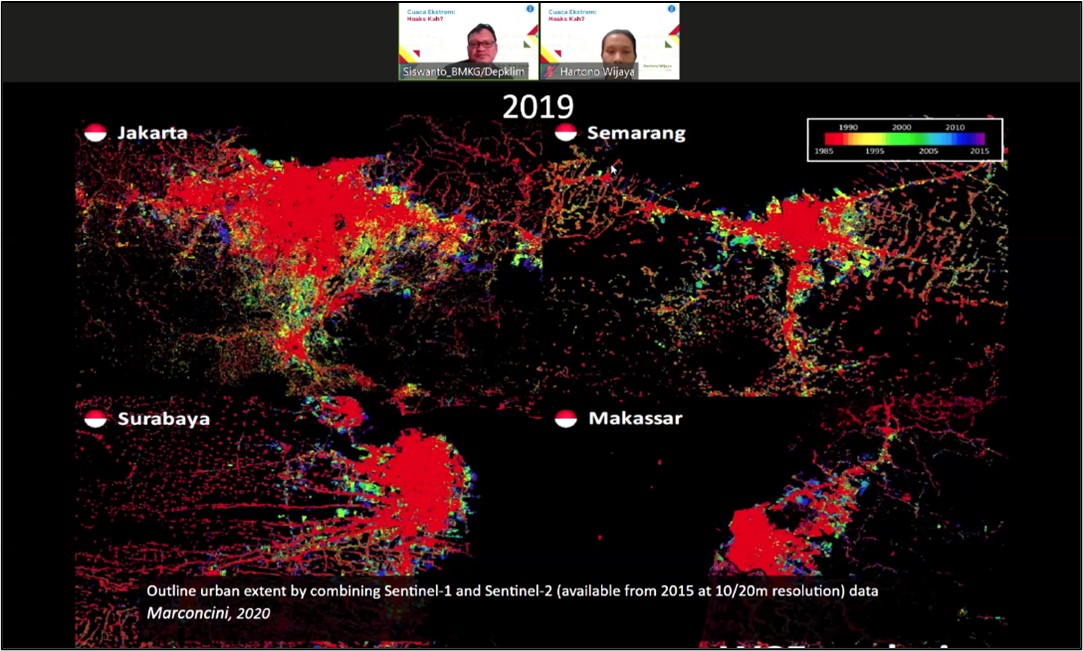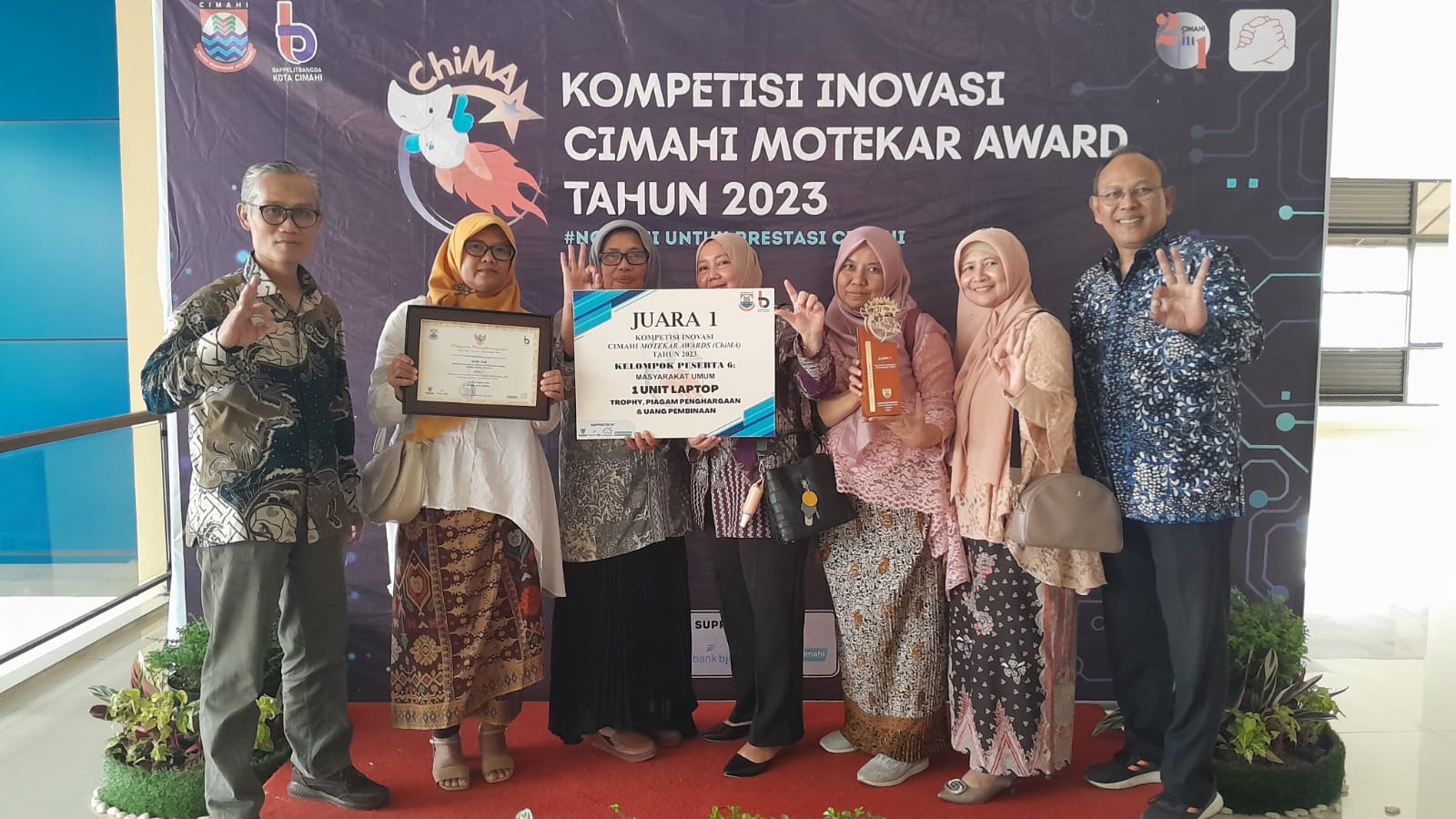Why Teaching About Indonesia’s Extreme Weather Can Prevent Major Public Hoaxes from Spreading
By Adi Permana
Editor Adi Permana

BANDUNG, itb.ac.id — Extreme weather has become more common, with global warming taking the credit for the worsening situation over time. Weather-related phenomena such as floods and droughts brought adverse impact to both environment and society. However, the majority of Indonesians are not aware of the underlying issue.
In order to educate the public concerning topics of extreme weather, ITB held an online workshop titled “Extreme Weather: Really a Hoax?” on Saturday (18/06/2022). The event was open to the public, with three speakers invited for discussion: Dr. Joko Wiratmo, M.P.; Siswanto, M.Sc. Ph.D. (cand); and Prof. Dr. Ir. Eddy Hermawan, M.Sc.
Dr. Joko emphasized the importance of comprehending extreme weather in Indonesia as a part of daily life. Awareness regarding extreme weather can also help local communities to find the best solution to build resilience, as well as adapting with the problems they faced. “Conveying information revolving the weather requires a strong foundation in science, this is important to prevent irresponsible information from spreading, which we really can’t avoid,” stated the Vice Dean of the Faculty of Earth Sciences and Technology ITB, Agus Mochamad Ramdhan, S.T, M.T, Ph.D.
The first session was opened by Dr. Joko, the chief executive of the event. As a lecturer of the Undergraduate Program in Meteorology, FEST ITB, he explained that most information regarding the weather is often delivered inaccurately. These news branded as hoaxes, which often goes viral, rarely has any clear context of time and date. In addition to incompetent news sources, the information flying around lacked scientific backing.
“For example, if only these news causing restlessness are quickly acted upon, such as through swift newscasting of the actual information by mass media, the amount of circulating hoaxes will diminish while citizens are educated with factual knowledge.”
Theoretically, the world has six subsystems encompassing the general climate: atmosphere, hydrosphere, cryosphere, biosphere, litosphere, and humanosphere. All said parts interact with each other to create a complex climate. Therefore, viewing climate issues cannot be limited to the atmospheric aspect, but rather through every existing subsystem that influences climate conditions at specific times.
An abnormally high or low parameter value caused by natural or human factors indicates extreme weather or climate. “Most of the time, the changing climate is 90% induced by human factors,” pointed out Dr. Joko.
Dr. Joko adds, “Thus, controlling climate change starts from changing current human behavior.” The actionable attitude that one can take to improve the situation is through being more proactive and responsive in echoing scientific truth to the people, such as through mass media or social media. It is also recommended that the public investigates every news or natural phenomena around them, such that they gain factual information.

The second sharing discussion was led by the Young Researcher of Meteorology and Climatology Field, representative of the Information Centre for Climate Application Meteorology, Climatology, and Geophysical Agency (MCGA), Siswanto. He explained that the World Meteorological Organization (WMO) released a statement that 2021 was the second hottest year recorded on holocene Earth. The global temperature increase is not a hoax and is an ongoing process. Indonesia itself has been affected by global warming. According to a study conducted by the MCGA, the surface temperature of the country has shown an increasing trend for the last 40 years.
One of the triggers causing temperature rise is urban development which changes the surrounding environment rapidly. The escalation of this local warming is faster if compared to the rural regions. According to the National Agency for Disaster Countermeasure (NADC) 2021 report, a total of 197 disasters were declared by that year which 96% were caused by hydrometeorology catastrophe related to extreme weather and climate.
The WMO announced that the average global temperature on the Earth’s surface throughout 2020 to 2024 will keep rising by at least 1°C with a possibility of more than 1.5°C increase in the timespan of one year. The consequence of this drastic temperature upsurge is such that the atmospheric vapor collection capacity will increase, therefore incurring various threats of hydrometeorology disasters, for example extreme precipitation and great floods.

The following session is a lecture delivered by Prof. Eddy, the leading expert researcher of the National Research and Innovation Agency’s Centre of Climate and Atmosphere Research. He explained the topics surrounding extreme weather that are common victims of hoaxes, such as heavy rainfall and flooding, global warming, as well as droughts and heatwaves. Indonesia itself has experienced drought during the rainy dry season in 2020 and 2021. The phenomenon was predicted to return this year throughout the June-August period.
“We must understand that while Indonesia is a maritime continent, the weather of each region differs,” he explained. There are regions with monsoonal rain variation, while others might be anti-monsoonal or even equatorial. Every region with different precipitation types has a distinct response.
Seasonal data based on the IOD index indicated June 2022’s precipitation rate as above the normal levels, hence in August and September a heavier rainfall was forecasted. In the long run, La-Nina weather patterns will dominate the seasonal Climate Prediction Centre (CPC) data, beginning in 2020’s dry season.
Following this trend, it seems that rainy dry seasons will ensue, at least until the end of September or the beginning of October 2022, affected by the negative-phased IOD. These kinds of weather are exclusive to the Indian Ocean’s monsoonal rain type.
Reporter: Ruth Nathania (Environmental Engineering, 2019)
Translator: Firzana Aisya (Bioengineering, 2021)

.jpg)

.jpg)
.jpg)
.jpg)
